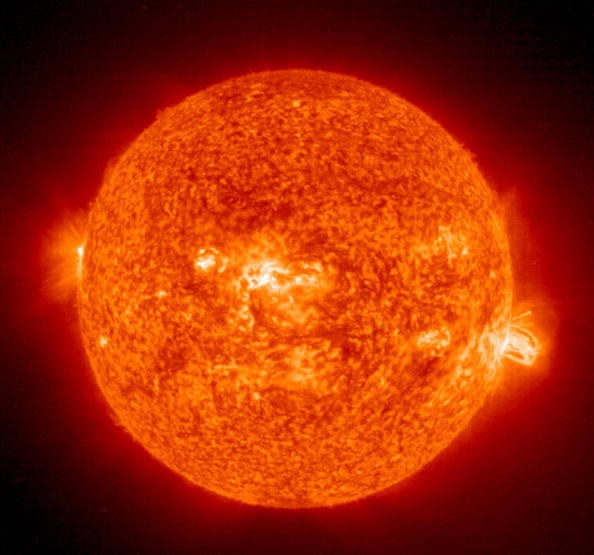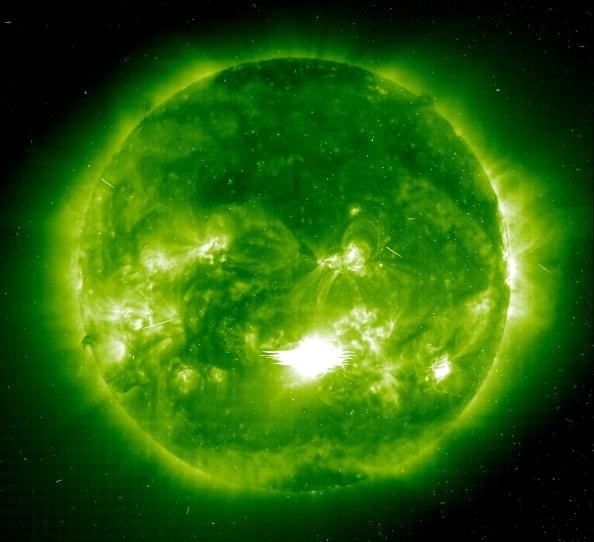The X-class flare was a very serious one, but it won't interfere with anything on Earth. The Sun acted too soon on the day of celebration - July 4, as a great solar flare erupted on the 3rd of July. NASA's Solar Dynamics Observatory was able to capture the outburst.

X-class Flare
The flare that erupted was an X1.5-class flare. The largest flare the Sun emits is the X-class flare, before A-, B-, C-, and M-class flares. X-class flares are 10 times more powerful than M-class flares, on the hitting order, they are the next one down, and are our solar system's largest explosions - all respect to the 2012 great San Diego fireworks debacle.
The X1.5 moniker indicates that the flare is situated precisely between an X1 and X2 flare in its intensity. Solar flares cannot be seen from the Earth when they are at their most mild, just a portion of the Sun's normal chatter of activity can be visible.
But when this flare is more intense - when the magnetic fields intersect of the Sun, for instance -great loops of coronal mass ejection larger than the size of Earth by far can bounce from the surface of the star.
Solar Storm
When directed to the earth, those flares have the ability to disturb our satellites and communications systems, even those situated on the ground. There's even proof a solar storm during the Vietnam War led to the explosion of so many sea mines.
None of that is linked to the current flare, though, which was recorded by Atmospheric Imaging Assembly telescope on a route that caught areas of the Sun's surface or corona.
Swaths of the corona are about 10 million degrees Fahrenheit. Yet, the somewhat puny fireworks in your area possibly constitute more threat than the Sun's outbursts.

Coronal Mass Ejection
An unexpected flash of intense brightness on the Sun, normally noticed close to its surface and in close proximity to a sunspot group is called a solar flare. Powerful flares are often, but occasional, and coronal mass ejection normally accompany the flare. Even the most intense flares are hardly detectable in the total solar irradiance (the "solar constant").
They happen in a power-law spectrum of magnitudes; a release of energy usually 1020 joules of energy enough to bring about a clearly observable occurance, while a primary event can emit about 1025 joules. Although initially noticed in the clear electromagnetic spectrum, mostly in the Hα emission line of hydrogen, they can now be identified from radio waves to gamma-rays.
Flares are closely related to the ejection of plasmas and particles via the corona of the Sun into outer space; they also emit radio waves greatly.
Related Article : Solar Storm Incoming: A Particularly Intense Geomagnetic Storm Will Hit Earth on May 13
For more news, updates about solar flares and similar topics don't forget to follow Nature World News!
© 2025 NatureWorldNews.com All rights reserved. Do not reproduce without permission.





